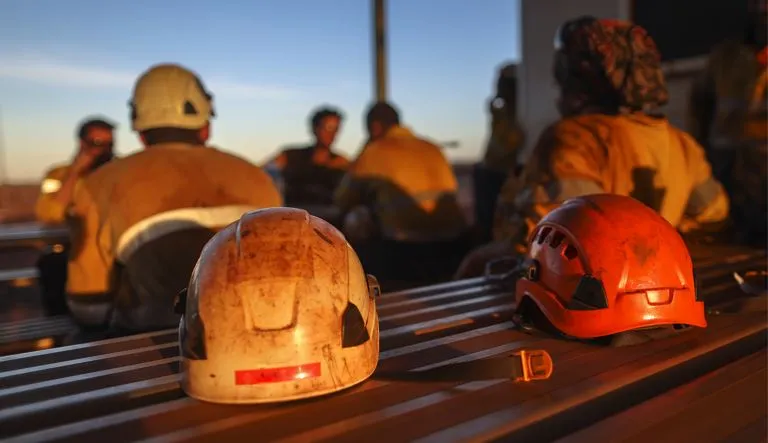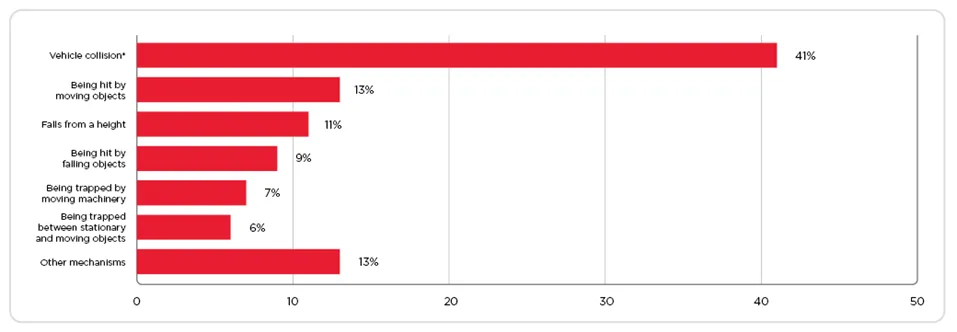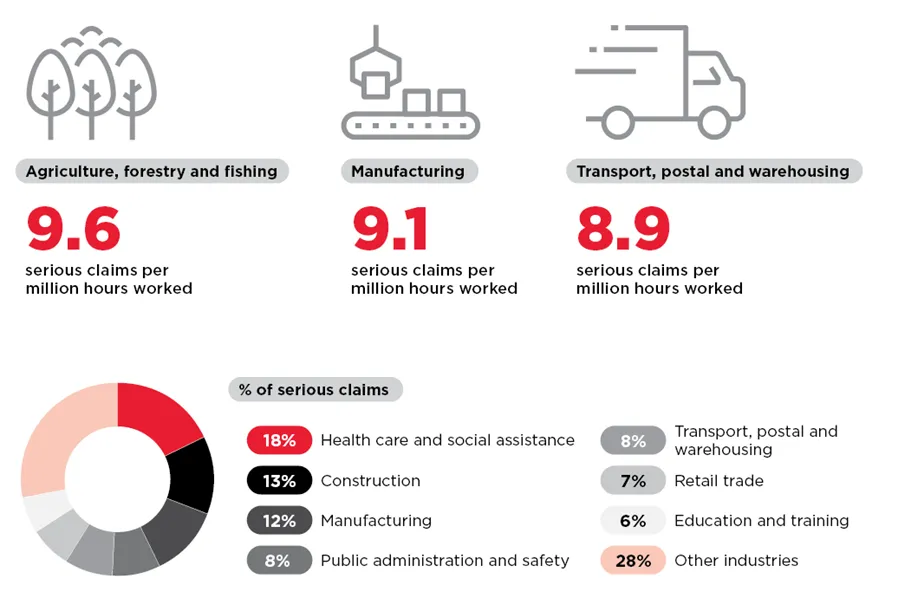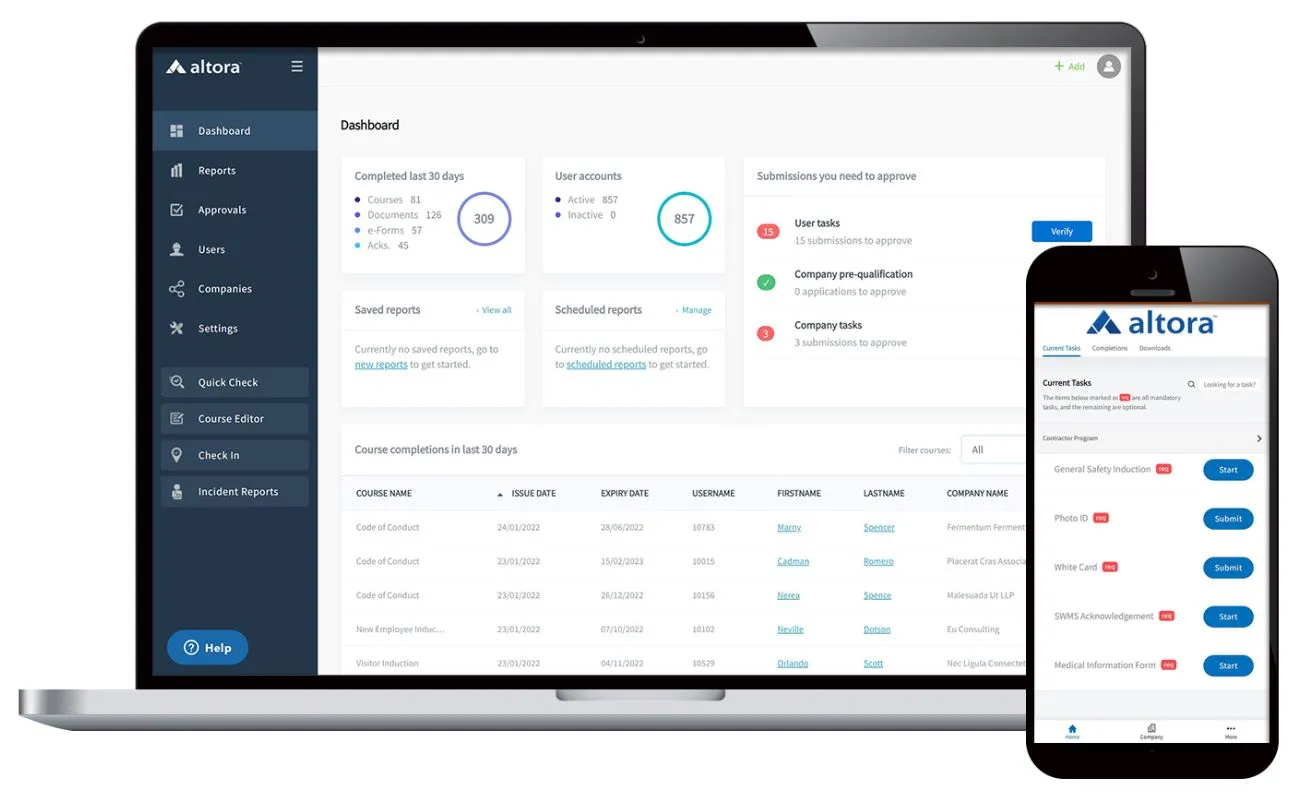Work-Related Fatalities in Australia and WHS Compliance
Grace Clueit 4 min readWhen we go to work each morning, we never think there's a chance we won't be returning home at the end of the day. In 2020 in Australia, that wasn't t...

When we go to work each morning, we never think there’s a chance we won’t be returning home at the end of the day. In 2020 in Australia, that wasn’t the case for 194 people who suffered a work-related fatality - resulting from an injury they sustained in the course of their work activity.
According to Safe Work Australia’s 2021 Work-related Traumatic Injury Fatalities report, 8 women and 186 men died as a result of a workplace incident – as a worker, or bystander, including employees, contractors, subcontractors, self-employed people, apprentices, trainees and volunteers.
The annual report provides statistics relating to gender, age, industry and occupation breakdowns for work health and safety (WHS) and serious workers’ compensation claims nationally.
The report shows the older the worker, the more likely they are to suffer a fatality in the workplace, with the fatality rate at 2.9 per 100,000 workers for 55–64-year-olds and a huge 5.3 per 100,000 workers for those aged 65 and over. Those working in the Northern Territory also had a higher chance of work-related fatalities with 4.9 in every 100,000 workers.
Workers were more likely to suffer a fatality as a result of a vehicle collision, representing 41% of overall numbers. Vehicle collisions include fatalities that occurred as a direct result of a vehicle crash - including cars, trucks, aircraft, boats, loaders, tractors and quad bikes.
 Source: Safe Work Australia 2021 Work-related Traumatic Injury Fatalities report
Source: Safe Work Australia 2021 Work-related Traumatic Injury Fatalities report
Top 5 Industries with work-related fatalities in Australia
According to the report, the agriculture, forestry and fishing industry has the highest fatality rate per 100,000 workers with 13.1 workers followed by the transport, postal and warehousing sector. These industries align with the fatalities by mechanism of incident being vehicle collisions.
| Industry of employer | *Number of fatalities * | Fatality rate *(fatalities per 100,000 workers) * | | Agriculture, forestry and fishing | 46 | 13.1 | | Transport, postal and warehousing | 49 | 7.8 | | Construction | 36 | 3.1 | | Manufacturing | 19 | 2.2 | | Mining | 5 | 2.1 |
Source: Safe Work Australia 2021 Work-related Traumatic Injury Fatalities report
Financial Impacts - serious claims by nature of injury
Information on workers’ compensation claims is also incorporated into the annual report, with serious claims being assessed. These include all accepted workers’ compensation claims that results in absence from work of one week or greater (excluding fatalities).
There were 120,355 serious compensation claims in 2020, with a median compensation of $13,500 per claim. 18% of these serious claims occur as a result of an incident in the Healthcare sector, followed by 13% in the Construction sector, and 12% from Manufacturing.
The financial impacts also stretch beyond the claim values with many direct and indirect costs incurred by companies from workplace accidents and injuries such as loss of productivity, damage to reputation, and personal injury.
 Source: Safe Work Australia 2021 Work-related Traumatic Injury Fatalities report - S Serious claims by industry, 2019-20p
Source: Safe Work Australia 2021 Work-related Traumatic Injury Fatalities report - S Serious claims by industry, 2019-20p
WHS compliance and the benefits of online induction

To ensure employers meet their obligations under the WHS Act, it’s important that the appropriate measures are in place to manage workplace compliance and minimise risks.
Delivering timely and effective inductions for workers – employees and contractors – is vital. It’s also important to ensure that worker and company licences and certifications are up to date and verified.
Altora’s online induction system combined with its contractor management system can assist businesses to manage worker onboarding with ease. The easy to use, reliable system provides employers the platform to deliver induction programs anywhere, anytime. Workers can undertake assessments online, and upload documentation for prequalification. You can onboard and induct workers before they even set foot on a worksite or workplace.
WHS compliance training will vary depending on the nature of the business and industry. By conducting regular training, education in policies and procedures, you can use Altora’s online induction software to assessing workers understanding, and track progress or completion of online training, and monitor through real-time reporting.
Get in touch
Talk to us about a Free Trial of Altora’s Online Induction & Compliance System. Call 03 9329 7130 , or email us today.

This article was written by Grace Clueit, Altora’s Marketing Manager. Grace has significant experience in marketing and writing.
This content was 100% human-created.